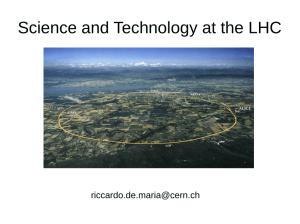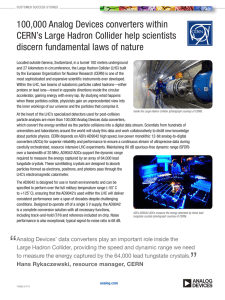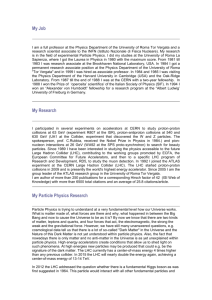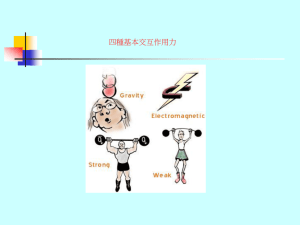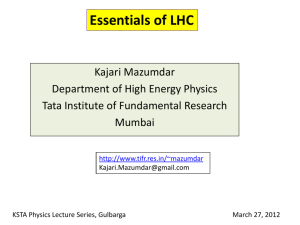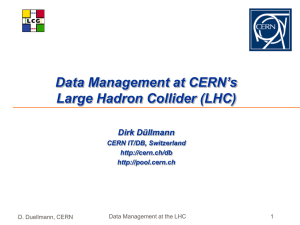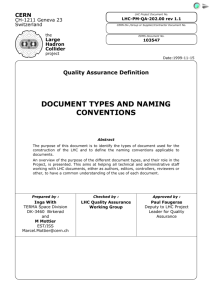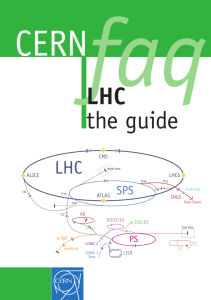What does LHC stand for
advertisement
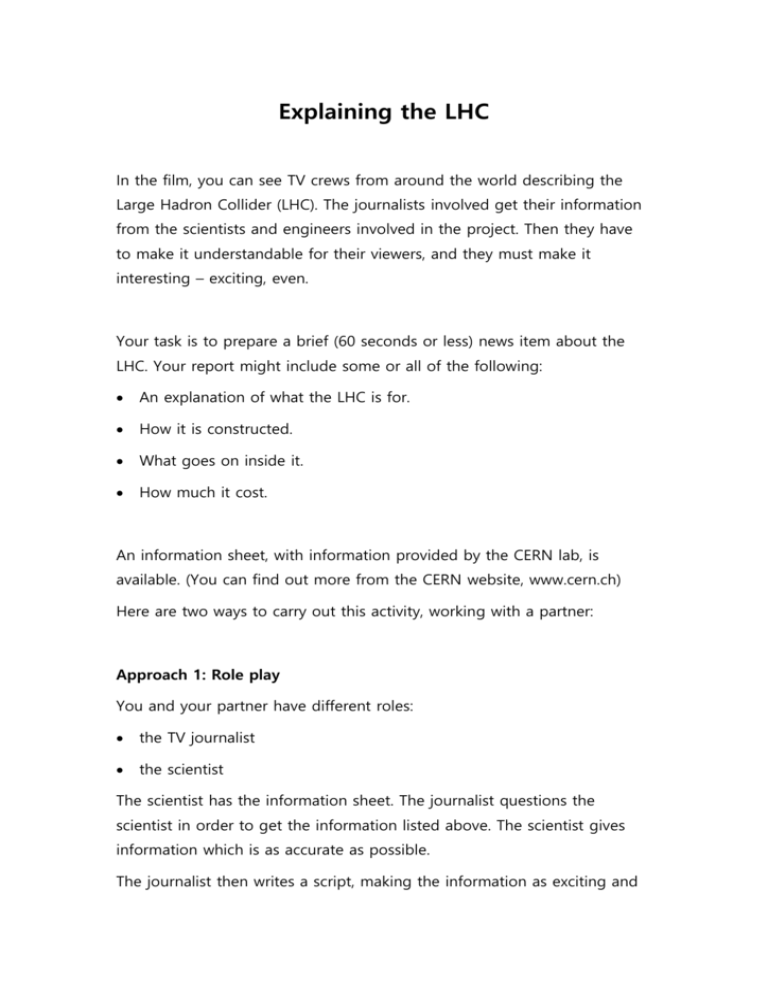
Explaining the LHC In the film, you can see TV crews from around the world describing the Large Hadron Collider (LHC). The journalists involved get their information from the scientists and engineers involved in the project. Then they have to make it understandable for their viewers, and they must make it interesting – exciting, even. Your task is to prepare a brief (60 seconds or less) news item about the LHC. Your report might include some or all of the following: An explanation of what the LHC is for. How it is constructed. What goes on inside it. How much it cost. An information sheet, with information provided by the CERN lab, is available. (You can find out more from the CERN website, www.cern.ch) Here are two ways to carry out this activity, working with a partner: Approach 1: Role play You and your partner have different roles: the TV journalist the scientist The scientist has the information sheet. The journalist questions the scientist in order to get the information listed above. The scientist gives information which is as accurate as possible. The journalist then writes a script, making the information as exciting and relevant as possible to the TV audience. Approach 2: Working together You and your partner are both journalists. You have been supplied with the information sheet by the CERN press office. Together, write a script, making the information as exciting and relevant as possible to the TV audience. What does LHC stand for? LHC stands for Large Hadron Collider. Large due to its size (approximately 27 km in circumference), Hadron because it accelerates protons or ions, which are hadrons, and Collider because these particles form two beams travelling in opposite directions, which collide at four points where the two rings of the machine intersect. How much does it cost? The cost for the machine alone is about 3 billion Euros. Why large? The size of an accelerator is related to the maximum energy obtainable. In the case of a collider, this is a function of the radius of the machine and the strength of the magnetic field that keeps particles in their orbits. The LHC re-uses the 27‑ km circumference tunnel that was built for the previous big accelerator, LEP. The LHC uses some of the most powerful magnets and radiofrequency cavities in existence. The size of the tunnel, magnets, cavities and other essential elements of the machine, represent the main constraints that determine the energy of each proton beam. Why collider? A collider (that is a machine where counter-circulating beams collide) has a big advantage over other kinds of accelerator where a beam collides with a stationary target. When two beams collide, the energy of the collision is the sum of the energies of the two beams. A beam of the same energy that hits a fixed target would produce a collision of much less energy. Why hadrons? The LHC will accelerate two beams of particles of the same kind, either protons or lead ions, which are hadrons. An accelerator can only accelerate certain kinds of particle: firstly they need to be charged (as the beams are manipulated by electromagnetic devices that can only influence charged particles), and secondly, except in special cases, they need not to decay. This limits the number of particles that can practically be accelerated to electrons, protons, and ions, plus all their antiparticles. Why is the LHC built underground? The LHC re-uses the tunnel that was built for CERN’s previous big accelerator, LEP, dismantled in 2000. The underground tunnel was the best solution to house a 27‑ km circumference machine because it is cheaper to excavate a tunnel rather than acquire the land to build at the surface and the impact on the landscape is reduced to a minimum. In addition, the Earth’s crust provides good shielding for radiation. The tunnel was built at a mean depth of 100 m, due to geological considerations and its depth varies between 175 m (under the Jura) and 50 m (towards Lake Geneva). What are the main goals of the LHC? Our current understanding of the Universe is incomplete. The Standard Model of particles and forces l has been tested by various experiments and it has proven particularly successful in anticipating the existence of previously undiscovered particles. However, it leaves many unsolved questions, which the LHC will help to answer: Why does matter have mass? Can we find the Higgs boson, the particle which will explain mass? Matter and antimatter must have been produced in the same amounts at the time of the Big Bang, but from what we have observed so far, our Universe is made only of matter. Why? The LHC could help to provide an answer. Heavy ion collisions at the LHC will provide a window onto the state of matter that would have existed in the early Universe. When heavy ions collide at high energies they form for an instant a fireball of hot, dense matter that can be studied by the experiments.

